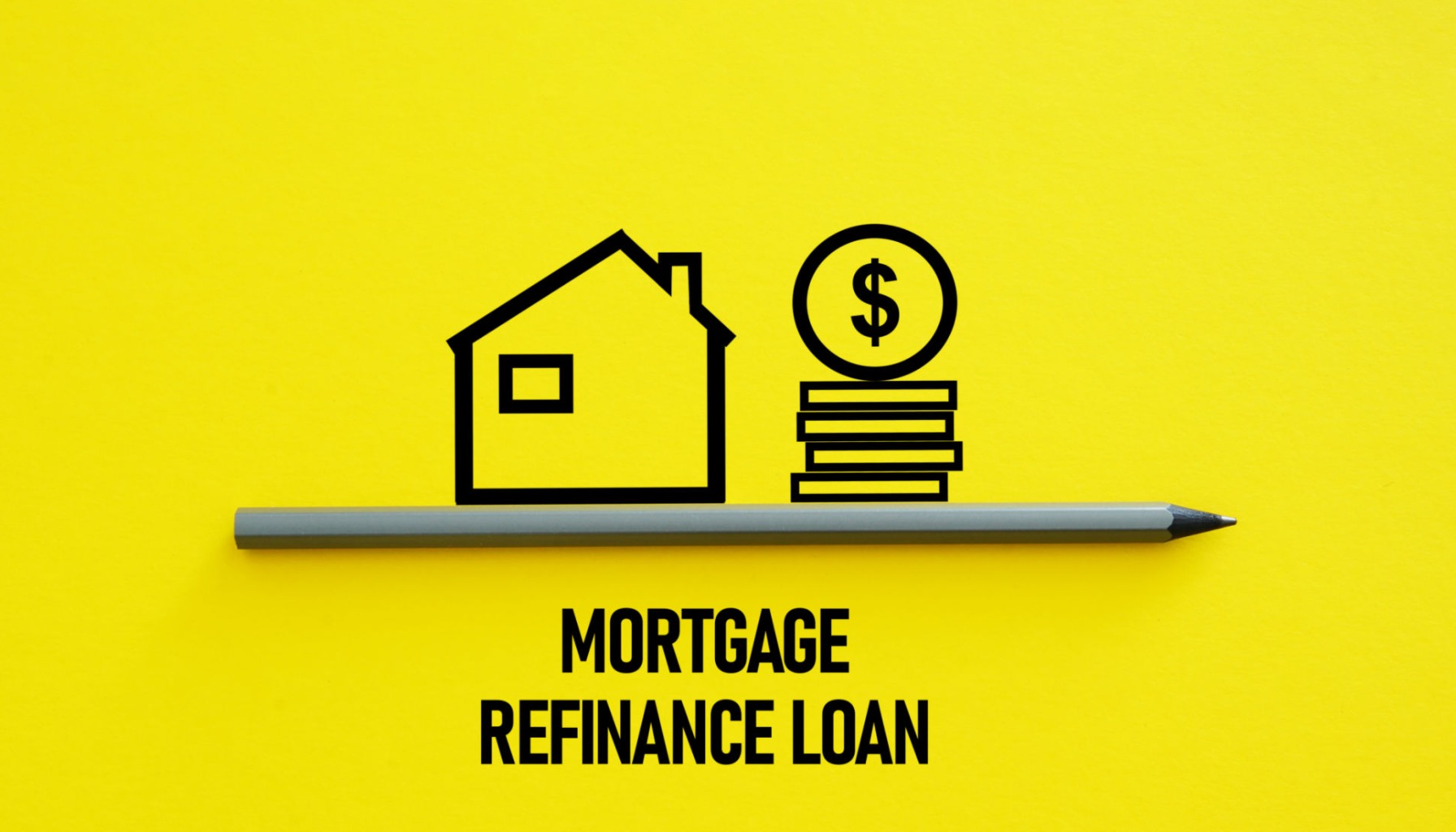If you're thinking about refinancing your mortgage, here's the quick news: as of today, October 4, 2025, the national average for a 30-year fixed refinance rate is 7.13%, according to Zillow. That's up 10 basis points from last week's average.
Mortgage rates are like the weather – they change all the time! And knowing what's happening with refinance rates is crucial, especially if you're considering making a move. Let's break down what's happening, why, and what it means for you, incorporating insights from a recent Federal Reserve decision.
Mortgage Rates Today: 30-Year Refinance Rate Rises by 10 Basis Points
Zillow reported that the 30-year fixed refinance rate is sitting at 7.13%. Also, the 15-year fixed refinance rate saw a steeper jump, climbing 30 basis points to 6.10%. The 5-year ARM (Adjustable Rate Mortgage) refinance rate also went up a bit, landing at 7.41%.
Here's a table summarizing the changes :
| Loan Type | Current Rate (Oct 4, 2025) | Previous Rate | Change (Basis Points) |
|---|---|---|---|
| 30-Year Fixed Refinance | 7.13% | 7.03% | 10 |
| 15-Year Fixed Refinance | 6.10% | 5.80% | 30 |
| 5-Year ARM Refinance | 7.41% | 7.39% | 2 |
A “basis point” is just one-hundredth of a percentage point (0.01%). So, when we say a rate increased by 10 basis points, it went up by 0.10%. While that might not sound like a lot, it can add up over the life of a loan!
Why Are Rates Moving? Decoding Market Influences
What makes mortgage rates go up and down? It's a complex dance with lots of players but here are a few major influences :
- The Economy: If the economy is doing well, with lots of jobs and spending, rates tend to rise. If the economy is struggling, rates may fall to encourage borrowing and investment.
- Inflation: Inflation is a big one. If prices are rising quickly, the Federal Reserve may raise interest rates to slow things down.
- The Federal Reserve (The Fed): Speaking of the Fed, this central bank has a major influence on interest rates. They set the Federal Funds Rate, which is the rate banks charge each other for overnight lending. This, in turn, influences other interest rates, including mortgage rates.
- Global Events: Major world events, like economic downturns in other countries, and global health scares, can also affect mortgage rates.
- Investor Confidence: Ultimately, it comes down to what investors think. If they're confident about the future, they're more likely to invest in riskier assets, which can push mortgage rates down. If they're nervous, they'll flock to safer investments, which can push mortgage rates up.
The Fed's Recent Actions and Mortgage Rate Impact
The Federal Reserve plays a crucial role in shaping the mortgage market. On September 17, 2025, they made their first cut of the year, lowering the benchmark interest rate by a quarter percentage point (0.25%). This move shifted the target range from 4.25%-4.5% to 4.0% to 4.25%. This was the first cut after a pause in 2025, following three cuts in late 2024.
Now, you might be wondering why the 30-year refinance rate increased, despite the Fed cutting rates? The key is understanding how the Fed's actions impact mortgage rates. Ultimately, all of this is interconnected.
Here are some potential reasons:
- The 10-Year Treasury Yield: The Fed's rate cut influences mortgage rates indirectly through the 10-year U.S. Treasury yield, which is like a benchmark for 30-year fixed-rate mortgages. Lenders use the 10-year yield as a baseline for pricing mortgages, but:
- Mortgage rates are usually 1 to 2 percentage points higher than the 10-year yield to make up for the risk taken by the lenders.
- Currently, this difference is more than 2 percentage points, keeping mortgage rates pretty high.
- Inflation Persistance: The Fed is in a tricky situation. They want to help the economy, but they also need to manage inflation. If inflation stays high (Core PCE price index increased 2.9% year-over-year in August), the Fed might have to be cautious about cutting rates further.
- Economic Growth: On the other hand, the economy grew at a solid pace in the second quarter of 2025 (Real GDP increased at an annualized rate of 3.8%). This might give the Fed some room to maneuver.
- Market Expectations: Finally, what investors expect to happen in the future can also influence rates. A decline in rates may encourage some “rate-locked” homeowners to list their properties, potentially boosting inventory.
Navigating the Market: Strategies and Tips
So, what should you do with all this information? Here's my take depending on your needs:
- If you're thinking about refinancing: The recent increase in rates is a reminder that rates can change quickly. If you're serious about refinancing, it's a good idea to shop around and compare offers from multiple lenders. Make sure to factor in all the costs involved, not just the interest rate.
- If you're a homebuyer: Even small decreases in mortgage rates can make a difference in affordability.
- If you're a seller: The decline in rates may encourage some “rate-locked” homeowners to list their properties, potentially boosting inventory.
How to Optimize Your Mortgage Strategy
Here are a few additional tips to keep in mind:
- Check Your Credit Score: A good credit score can help you qualify for a lower interest rate.
- Shop Around: Don't just go with the first lender you find. Get quotes from multiple lenders to see who can offer you the best deal.
- Consider the Long Term: Think about how long you plan to stay in your home. If you plan to move in a few years, an adjustable-rate mortgage might be a good option. But if you plan to stay for the long haul, a fixed-rate mortgage might be a better choice.
- Don't Time the Market: Trying to time the market is almost impossible. Focus on finding a rate and loan that you're comfortable with, and don't worry too much about what might happen in the future.
Recommended Read:
30-Year Fixed Refinance Rate Trends – October 3, 2025
Looking Ahead
The Fed's path forward will depend on the data. Keep an eye on:
- Inflation Reports: The next PCE (Personal Consumption Expenditures) and CPI (Consumer Price Index) readings will be crucial.
- Labor Market Data: Keep up with job growth. Further softening in those numbers could push the Fed to take action.
- The Spread: Pay attention to the difference between Treasury yields and mortgage rates. If it shrinks, that could mean good news for your pocket!
Bottom Line: The mortgage market can be confusing, but hopefully, this breakdown has helped you understand what's happening and what it means for you. Remember to do your research, shop around, and make a decision that's right for your individual circumstances.
Maximize Your Mortgage Decisions
Thinking about whether to refinance now? Timing is critical, and having the right strategy can save you thousands over the life of your loan.
Norada's team can guide you through current market dynamics and help you position your investments wisely—whether you're looking to reduce rates, pull out equity, or expand your portfolio.
HOT NEW LISTINGS JUST ADDED!
Talk to a Norada investment counselor today (No Obligation):
(800) 611-3060
Recommended Read:
- When You Refinance a Mortgage Do the 30 Years Start Over?
- Should You Refinance as Mortgage Rates Reach Lowest Level in Over a Year?
- NAR Predicts 6% Mortgage Rates in 2025 Will Boost Housing Market
- Mortgage Rates Predictions for 2025: Expert Forecast
- Half of Recent Home Buyers Got Mortgage Rates Below 5%
- Mortgage Rates Need to Drop by 2% Before Buying Spree Begins
- Will Mortgage Rates Ever Be 3% Again: Future Outlook
- Mortgage Rates Predictions for Next 2 Years
- Mortgage Rate Predictions for Next 5 Years
- Mortgage Rate Predictions for 2025: Expert Forecast



